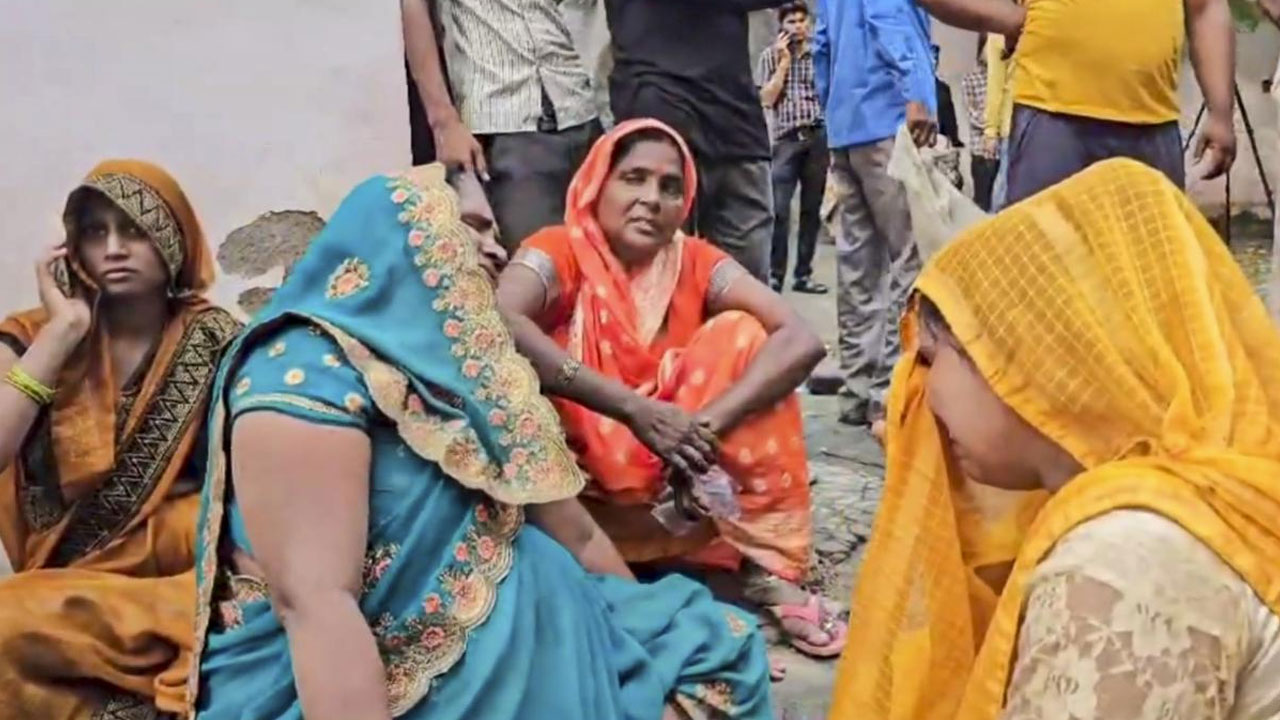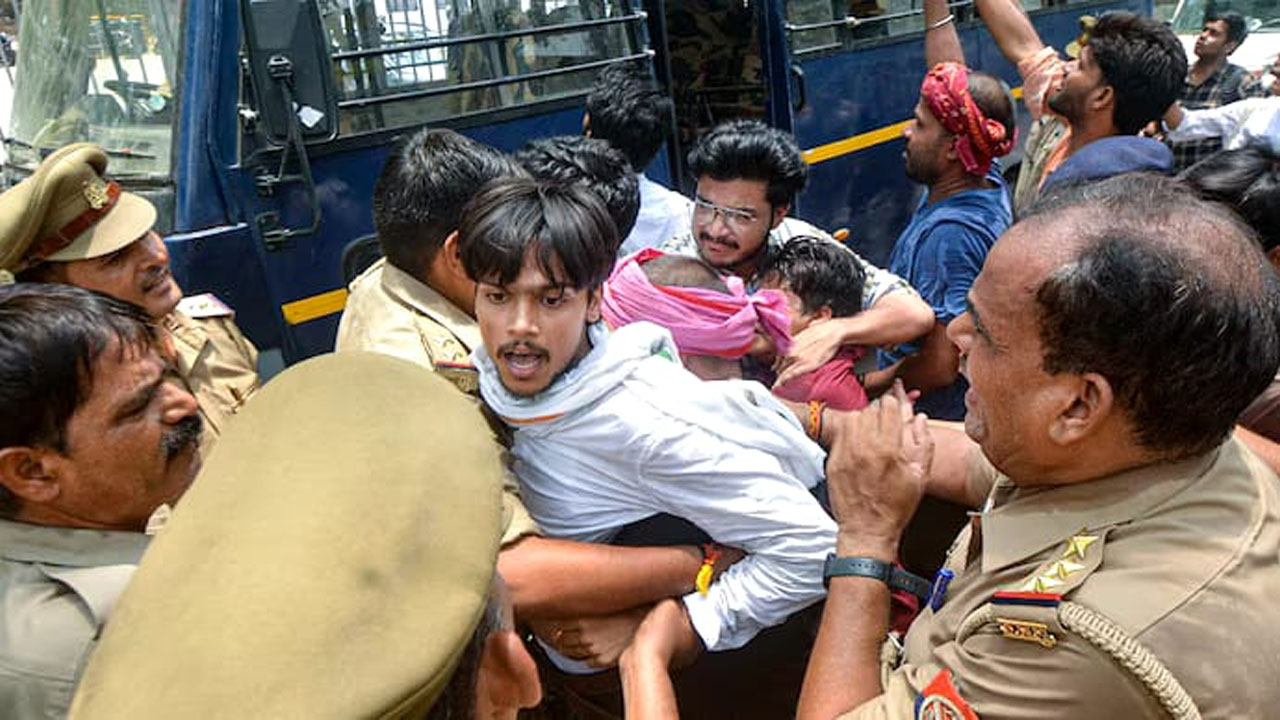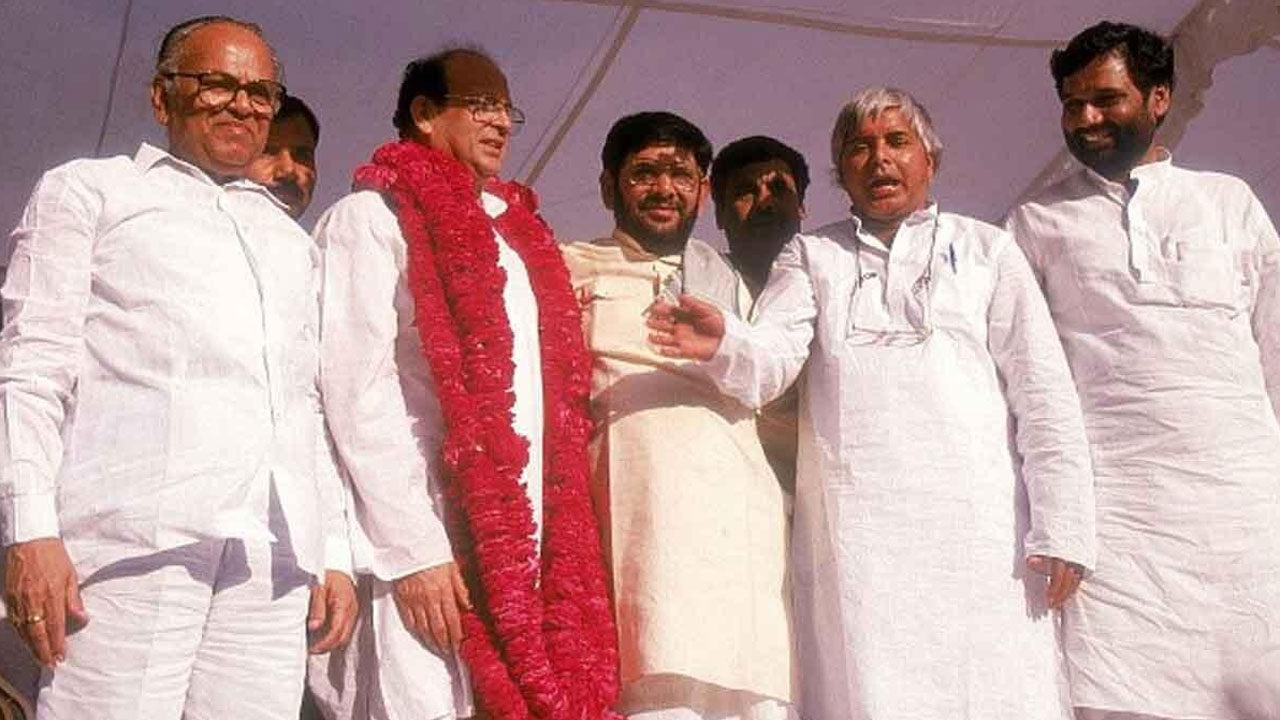Breaking the morale of the opposition and polarizing the country along communal lines have been the prime achievements of the nine-year rule of the Bharatiya Janata Party (BJP). It is not that the opposition lacks leaders or that its leaders lack experience, consciousness and commitment. We all know that the BJP has always been the beneficiary of a divided opposition. The last three years or so have witnessed a sharp drop in the popularity of Prime Minister Narendra Modi. Today, he is popular only in the make-believe world built by the media. At a time when the world economies are struggling to save themselves from collapse, the unholy alliance of the Indian media and the powers that be are worsening the situation in the country. Besides the State-funded and capitalist publicity machinery, the BJP is banking on its 25-26 per cent loyal voters and on shrewd tactics that can increase communal polarization. Needless to say, these tactics are being employed with alacrity as polls draw closer.
Opposition may be directionless but isn’t weak
These shrewd tactics will come to nothing if the opposition realizes its true potential and starts doing genuine politics to win the hearts of the people. Instead of issuing statements ensconced in air-conditioned chambers, the opposition leaders should take to the streets. It is ironic that today, the leadership of the opposition in the country is in the hands of dynasts. They have either developed amnesia for the struggles waged by their ancestors or have fallen prey to the systematic campaign of calumny launched against them. We are told that parties like the Congress, the Rashtriya Janata Dal (RJD), Samajwadi Party (SP), Rashtriya Lok Dal (RLD) and Bahujan Samaj Party (BSP) are casteist groupings, who win polls with the support of particular castes and on coming to power, further the interest of those very castes. We are not told that Lalu, Mulayam, Charan Singh, Kanshi Ram and Ramvilas Paswan had waged long struggles to bring their caste groups, which, of course, included their own castes, to the centrestage of politics. There was a time when the OBC, EBC and Dalit voters were not allowed to vote. Their votes were divided among themselves by the powerful castes. If the voters from these caste groups have managed to break free from the bondages crafted by Brahmanism to contain them in the name of religion and culture, and can walk up to the polling booths without fear, it is the outcome of the long struggle waged by leaders whom we today dismiss as leaders of Yadavs, Jatavs, Kurmis or Patels. To vent our frustration, we often brand them as casteist, too.
Caste yes, casteism no
There is hardly any constituency in the country where a single caste can get its representative elected to the state legislature or Parliament on its own. Either Mulayam or Lalu never said that they were in politics only for the sake of the Yadavs. Charan Singh’s politics was not confined to the Jats either. The path that led these leaders to success was paved by movements like Triveni Sangh and Arjak Sangh. Leaders like Periyar E.V. Ramasamy, Ambedkar, Babu Jagdeo Prasad, Ramswaroop Verma, Babu Ramcharan Nishad, Achhootanand and Maharaj Singh sharpened their politics, as did various peasant movements.
In western Uttar Pradesh, the middle castes also had substantial landholdings. Yet, Charan Singh, risking his popularity, campaigned for abolition of the Zamindari system. His book, Evolution of Zamindari: Two Alternatives is the product of his ground experience and sharp intellect. It is an unparalleled dissertation on the issue. Babu Jagdeo Singh’s slogan of ‘Sau mein nabbe shoshit hain, nabbe bhaag hamara hai’ (Ninety of every hundred are exploited, ninety per cent belongs to us) and Lohia’s war cry ‘Picchde pave sau mein saath’ (The backwards should get sixty of hundred) were born of the growing socialist consciousness in society.
However, the collapse of the Soviet Union in the 1990s came as a godsend for the global media to prophesize the demise of socialism. That had a devastating impact on the morale of all organizations that had managed to enter the corridors of power due to their direct or indirect association with socialism. However, they had tasted power by then, so, instead of defending socialism and proffering arguments to demolish the propaganda that it had become irrelevant, they took refuge in politics of caste. They became busy working out caste equations.
Hindu revivalist conspiracies not new
Hindi revivalist forces have long been at work in the country. They know how to hide their poison-filled hearts behind smiling faces. Those who have read Anandmath know that the protagonist was not as perturbed by the defeat of the Santans (Sanyasis) as he was elated by the defeat of the Muslims and the victory of the British. Mahapragya, one of the characters of Anandmath, says, “The British are our friends. In any case, no one is strong enough to defeat them.” If this is not singing paeans to the British rulers, what is? The novel ends with this dialogue. They saw their victory in the defeat of the Muslim rulers. They didn’t know that the British would soon lay the foundations of a new brand of politics in the country, which would accord the highest priority to economic interests and make caste and religion irrelevant.

Incidentally, great, world-famous utilitarian philosophers, including James Mill and John Stuart Mill, were in the employ of the East India Company. James Mill was a disciple of Jeremy Bentham, who believed that as the basis of governance, the rule of law was better than and superior to religion or morality fostered by religion. Besides the two, Lord Macaulay, who had similar ideological leanings, also contributed to making India a modern nation. However, the disillusionment of the Brahmins with the British had begun much earlier, in 1813, when the East India Company, ignoring the dictates of Manusmriti, allocated a budget of Rs 1 lakh for public education. After implementation of Macaulay’s education policy and promulgation of a new penal code, the British government became an eyesore for the Brahmins – this, when they were occupying most of the positions open to the Indians under Company Raj. And they also formed a majority of the Indians making money by trading with the East Indian Company and other business entities.
The colonial government was compelled to move towards a uniform civil code. Europe was witnessing ideological revolutions and it was time to shape society and governance in keeping with the new ideologies that were emerging. Apart from the British companies, Dutch, French and others were also keen to make India their economic colony. The British emerged victorious in the race as they were better at working out a balance between religion and politics. Once they had established their rule in the country, they began initiating changes in the system of governance and administration in keeping with the philosophy of John Stuart Mill, which laid stress on individual freedom. Macaulay became their instrument. Under his leadership, a series of changes were made in the fields of education, law and justice – something which the likes of Mahapragya of Anandmath, who was happy with the victory of the British, had never anticipated. This made the reactionary forces turn against the British and their anger was manifested in the sepoy mutiny of 1857. Those who, according to Anandmath, were celebrating the defeat of the Muslim nine decades earlier were now keen to evict the British from India with the help of the Muslims. That was the reason an attempt was made to whip up communal feelings among the Hindu and Muslim soldiers by launching a campaign against the use of lard (pig fat) and tallow (cow fat) to grease bullets.
Those who claim that the revolt of 1857 was the First War of Independence should ponder over the steps taken by the British rulers to bring about sociopolitical changes in the country in the 30-40 years prior to the revolt. They should also remember that it was the unparalleled endeavour of the European scholars to translate ancient Indian texts written in Sanskrit, Pali and Prakrit into European languages that brought about the rise of a band of Bahujan intellectuals. But for the European scholars, the Bahujan, who were not allowed to learn Sanskrit, could never have been able to access these texts.
Besides the British, Hindu revivalists also triumphed in the revolt of 1857. The British queen gave an assurance that the government wouldn’t interfere in the internal matters of the Hindus. By then, a section of the OBC-EBCs had managed to acquire an education. This section was committed to securing their rights and was strong enough to take its struggle ahead on its own strength. It was due to their well-organized movements that the revivalist forces, representing a minority of the Hindus, could not have their way.
But when Indira Gandhi began turning India into a socialist economy by abolishing privy purses, nationalizing banks, bringing big industries under state control and initiating land reforms, the leaders who had enthusiastically backed Lohia’s demand for building a socialist India began branding Indira Gandhi as an autocrat and took to the streets against her. Sampoorna Kranti was used as a ploy to boost Hindu revivalism.
Over the last four or five decades, vicious attempts were made to paint Mulayam Singh Yadav, Mayawati, Lalu Yadav and Chaudhary Charan Singh as leaders of particular castes. Similar stratagems were used in the past to defame movements like Triveni Sangh and their leaders. The only difference is that, today, the revivalist forces are with the BJP or its auxiliary organizations while earlier they used to piggyback the Congress or other parties.
The Congress viewed Triveni Sangh as an organization of the Zamindars while the Kisan Sabha saw it as a conglomerate of casteist forces. Both wanted to dissuade the people who were harbouring hopes from the Triveni Sangh and its leaders.
The Congress claimed that it was the party of all Indians. But the facts were to the contrary. Yadunandan Prasad Mehta writes: “It was announced that deserving persons would be fielded in the elections. They identified such persons. Then they were told that only Khadi-wearers would qualify; when they identified Khadi-wearers, they were told that a jail term was a mandatory qualification. When this rider was also fulfilled, they were told that legislatures are not the places where vegetables are sown, sheep are grazed, buffaloes milked or salt and oil sold.” (Triveni Sangh Ka Bigul) The Triveni Sangh couldn’t achieve political success, because its leaders were not as shrewd as those of the Congress.
Neither BJP is invincible nor are alternatives lacking
In his article titled ‘Rajada ke samajik nyaya ka vichardharatmak stand hai Bhumiharvaad’ (Bhumiharvaad is the ideological basis of RJD’s social justice) Aneesh Ankur quotes an elderly leader of the Triveni Sangh as saying that “Lalu Yadav is the fourth driver of the jeep that we had started.” (Sab Log, 5 April 2019). This rather rustic comment underlines the continuity of the politics of social justice and applies equally to Tejashwi Yadav and Akhilesh Yadav, who according to him, represent the fifth generation of the leadership of the social justice movement launched by Triveni Sangh. What is necessary for these new leaders is to associate themselves with that tradition and to convince the people that Hindu revivalism will ultimately bring back casteism and resources and powers will again be confined to a few. The day the opposition unites and starts making concerted attempts to mobilize the scattered people, the BJP will begin losing its ground. It will take the wind out of the sails of communal politics, and the media, which is singing the tune of the right-wing, will start changing colours.
(Translated from the original Hindi by Amrish Herdenia)
Forward Press also publishes books on Bahujan issues. Forward Press Books sheds light on the widespread problems as well as the finer aspects of Bahujan (Dalit, OBC, Adivasi, Nomadic, Pasmanda) society, culture, literature and politics. Contact us for a list of FP Books’ titles and to order. Mobile: +917827427311, Email: info@forwardmagazine.in)





